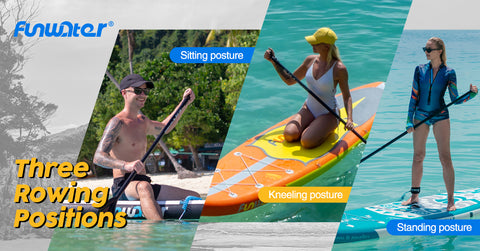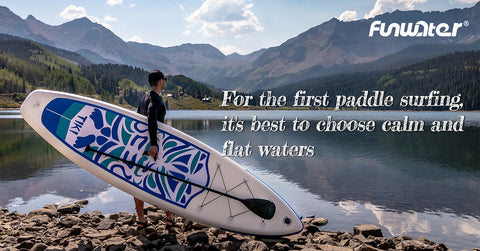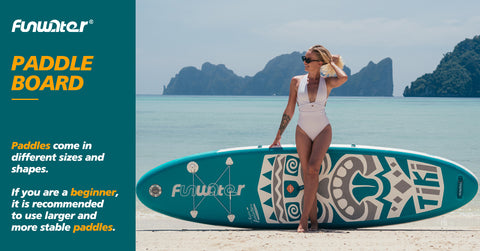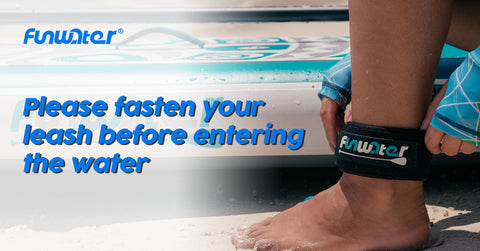How to Begin Paddle Boarding: A Starter's Guide
Paddle Boarding is a fun and exciting water sport that is gaining popularity worldwide. It's a great way to enjoy the water and get some exercise at the same time. However, if you're a beginner, it can be overwhelming to know where to start. In this article, we'll take you through the basics of how to begin paddle boarding and provide you with a starter's guide to help you get started.

What is Paddle Boarding?
Paddle Boarding, also known as Stand-Up Paddle Boarding or SUP, is a water sport that involves standing on a paddleboard and using a paddle to propel yourself forward. It originated in Hawaii in the 1960s as a way for surfers to train when the waves were flat. Today, it's a popular sport enjoyed by people of all ages and skill levels.
Why is Paddle Boarding Fun?
Paddle Boarding is fun because it's a unique way to experience the water. Unlike other water sports that require you to be seated or lying down, Paddle Boarding allows you to stand up and see the world from a different perspective. You can explore new places, enjoy the scenery, and even spot wildlife.
When and Where to Paddle Board?
Paddle Boarding can be done in any body of water that is calm enough to stand on the board. This includes oceans, lakes, rivers, and even man-made bodies of water like ponds or reservoirs. The best time to paddle board depends on the weather and the body of water you choose. In general, calm and flat water is best for beginners.

Getting Ready to Paddle Board
Before you start paddle boarding, there are a few things you'll need to do:
- Purchase or rent a paddleboard: Paddleboards come in different sizes and shapes, so it's important to choose one that suits your needs. If you're a beginner, a larger and more stable board is recommended. You can purchase or rent a paddleboard from a local sports store or online.
- Get the right gear: In addition to the paddleboard, you'll need a paddle, a leash, and a personal flotation device (PFD). The paddle should be the right size for you, and the leash should be attached to your board at all times to prevent it from floating away. A PFD is important for safety reasons and should fit snugly around your waist.

- Find a suitable location: As mentioned earlier, it's best to choose a calm and flat body of water for your first time paddle boarding. This will help you get used to the board and the paddling technique without the added challenge of waves or currents.
- Dress appropriately: Wear comfortable clothing that won't restrict your movement, and make sure to apply sunscreen and wear a hat to protect your skin from the sun.
Stepping Onto the Paddle Board
Once you're ready to start paddle boarding, follow these steps:
- Enter the water: Wade into the water up to your waist, with your board in front of you. Make sure the board is parallel to the shore and facing forward.
- Getonto the board: Place one foot on the center of the board and then step up with your other foot. Take your time and maintain your balance.
- Stand up: Once you're on the board, slowly stand up straight, keeping your feet shoulder-width apart. Keep your eyes focused on a fixed point in front of you to help maintain your balance.
- Start paddling: Hold the paddle with one hand on top and the other on the bottom, and then dip it into the water on the side of the board. Pull the paddle towards you, lifting it out of the water as you do so. Repeat this motion on the other side of the board to propel yourself forward.
Safety Tips for Paddle Boarding
While paddle boarding is a fun and exciting sport, it's important to prioritize safety. Here are some tips to keep in mind:
- Always wear a leash: A leash will prevent your board from floating away if you fall off or lose your grip. Make sure it's securely attached to your board and your ankle.

- Stay within your limits: Don't push yourself too hard or try tricks that are beyond your skill level. Start small and gradually increase your paddling distance and speed as you become more comfortable.
- Be aware of your surroundings: Keep an eye out for other boats, swimmers, or obstacles in the water.
Paddle Boarding is a fun and exciting water sport that can be enjoyed by people of all ages and skill levels. With the right gear, proper technique, and a focus on safety, you can explore new places and enjoy the water like never before. Whether you're a beginner or an experienced paddler, always remember to respect the water and those around you, and to have fun!





Leave a comment